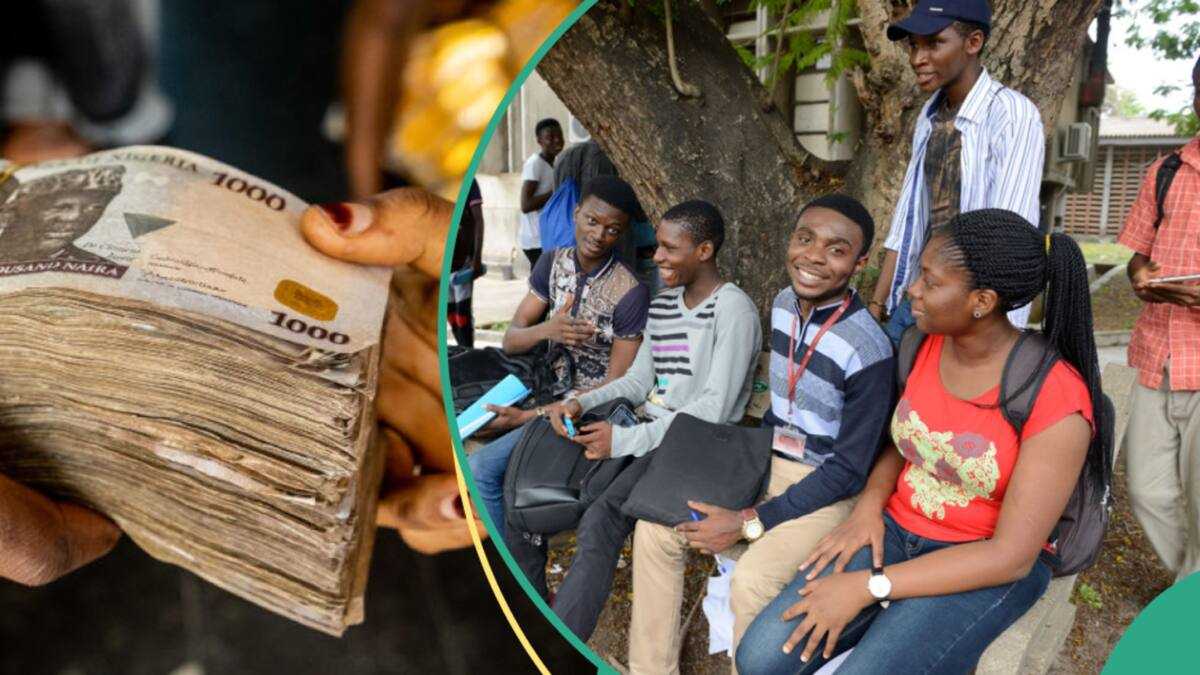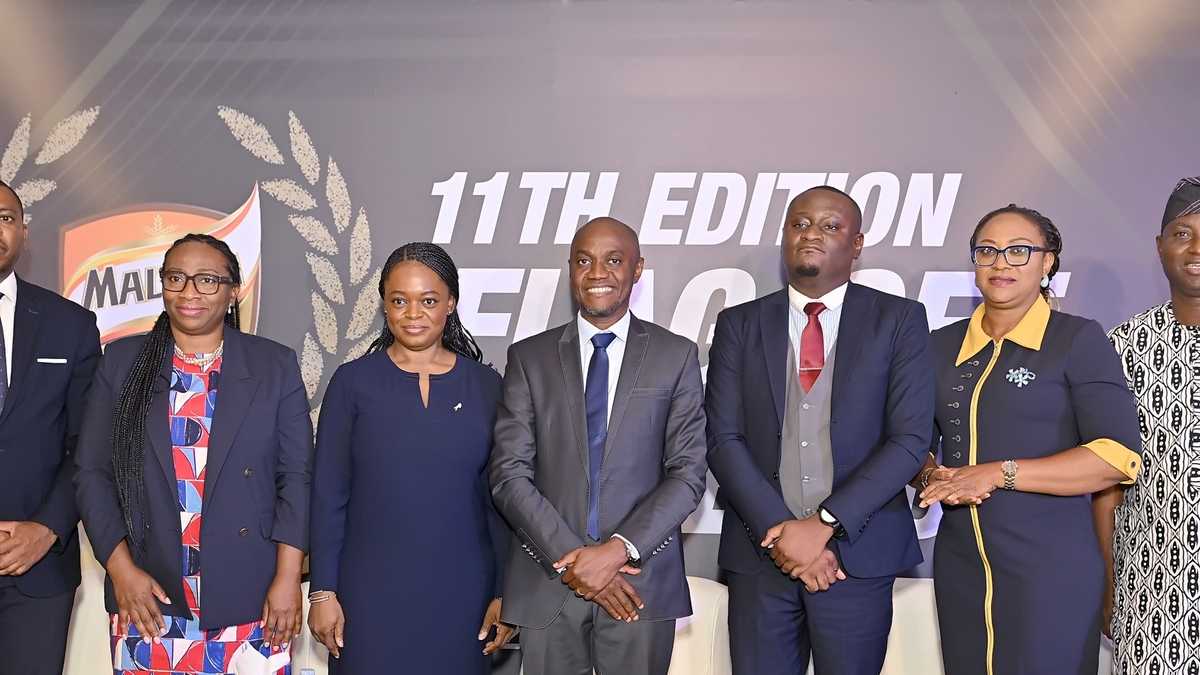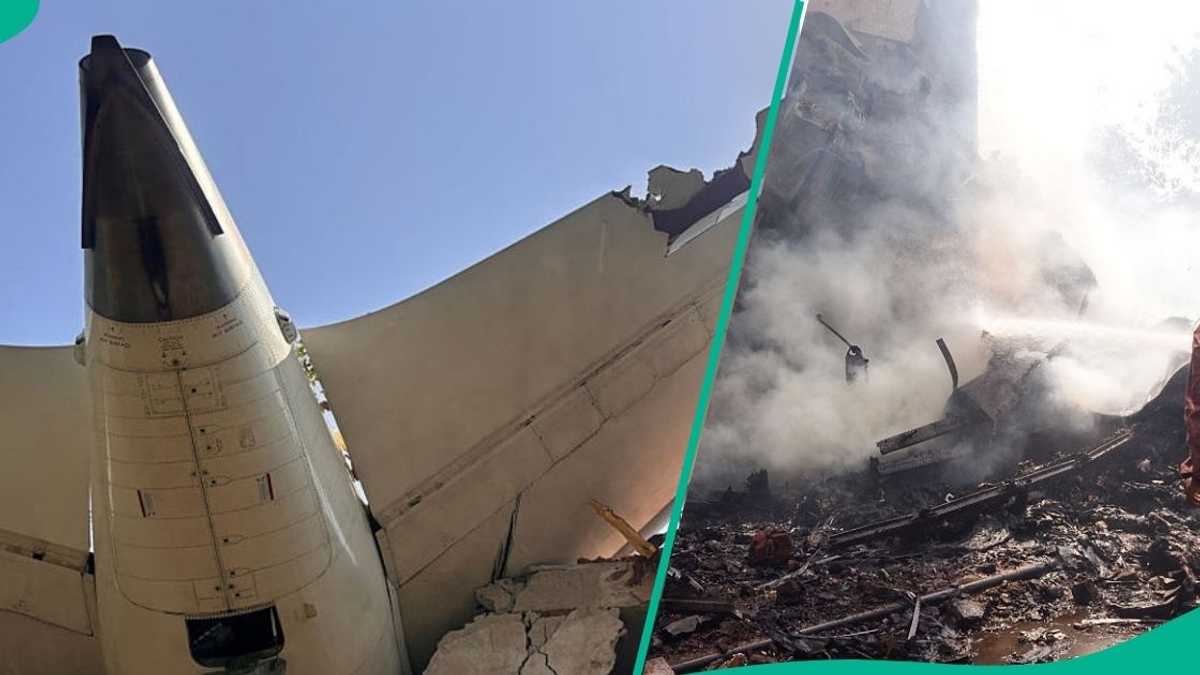Effectiveness and cost-effectiveness of a home-based functional exercise programme for community-dwelling frail older adults, ACTIVE-AGE@home, provided by professionals and volunteers: protocol of a pragmatic randomised controlled trial
Sports and exercise medicine
Effectiveness and cost-effectiveness of a home-based functional exercise programme for community-dwelling frail older adults, ACTIVE-AGE@home, provided by professionals and volunteers: protocol of a pragmatic randomised controlled trial
Between 2020 and 2050, the world’s population aged 80 years and over will triple, drastically increasing the prevalence of frailty and associated healthcare costs. Multimodal exercise programmes have proven to be an ideal countermeasure for frailty, but the current Flemish standard of care does not include them. The purpose of this study is to investigate the effect of the home-based exercise programme for frail community-dwelling older adults (>70 years), ACTIVE-AGE@home, on frailty-associated outcomes, when delivered by professionals or volunteers, as well as its cost-effectiveness. A pragmatic randomised controlled trial will be conducted. Participants will be randomised into three parallel groups using permuted block randomisation. There will be two intervention groups: in one group, the intervention is delivered by professionals with a bachelor or masters’ degree in physiotherapy, occupational therapy and/or physical education, and in the other by trained volunteers. Both groups will be compared with a control group receiving usual care. Participants (n=195) are community-dwelling physically frail older adults (>70 years), as defined by Fried et al. (2001). The intervention is a 24 week programme that consists of three 1 hour visits per week and contains aerobic, strength, balance, flexibility, coordination and dual tasking exercises, accompanied by goal-setting and motivational interviewing. The Timed Chair Stand (TCS) test is the primary outcome. Functional ability, cognition, loneliness, self-management, health-related quality of life, healthcare utilisation and meaningful activities will be measured in all groups at 0, 24 and 48 weeks. Time and expenses invested by professionals or volunteers will be kept in diaries for trial and model-based cost-effectiveness analyses, expressed in incremental cost per QALY (quality-adjusted life year). The model will be designed to associate the frailty at the end of follow-up with further expected healthcare expenses beyond the duration of the trial. Statistical analysis will be blinded to group allocation, and outcome assessors will be blinded to the maximal extent possible.
Ethics approval has been obtained from the Medical Ethics Committee of UZ Brussel (O.G. 016), Peer reflection group Biomedical Ethics, Laarbeeklaan 101, 1090 Brussels. Results will be disseminated in publications and other relevant platforms. This study was registered at Clinicaltrials.gov on 6 July 2023 and posted on 14 July 2023 after National Library of Medicine quality control review. Registration details: NCT05946109
http://creativecommons.org/licenses/by-nc/4.0/
This is an open access article distributed in accordance with the Creative Commons Attribution Non Commercial (CC BY-NC 4.0) license, which permits others to distribute, remix, adapt, build upon this work non-commercially, and license their derivative works on different terms, provided the original work is properly cited, appropriate credit is given, any changes made indicated, and the use is non-commercial. See: http://creativecommons.org/licenses/by-nc/4.0/.
If you wish to reuse any or all of this article please use the link below which will take you to the Copyright Clearance Center’s RightsLink service. You will be able to get a quick price and instant permission to reuse the content in many different ways.
The population is ageing rapidly. It is expected that worldwide between 2020 and 2050, people aged >60 years will increase by 50%, whereas people aged >80 years will triple.1 In Flanders, 20.9% of the population is 65 years or older, approaching the European average of 21,1%.2 Older adults aged 85 or older make up 3.2% of the Flemish population, scoring 0.2% above the European average. In addition, Flemish women and men only experience 64.4 and 64.8 healthy life years, respectively.3 One of the predetermining factors for the discrepancy between healthy life years and total life expectancy is the high prevalence of frailty in Flanders (21.5%).4 The onset of frailty rises with increasing age, independently of the assessment instrument.2 Among community-dwelling adults aged 80 or over, an even higher prevalence of frailty is observed in populations with specific diseases or chronic conditions.5 Since frailty has a severe impact on quality of life (QoL) and healthcare utilisation, effective interventions should be developed and implemented.6
Frailty is a clinically recognisable state in older people, resulting from age-related declines in physiological reserve and function across multiple organ systems.7 8 Frailty is, however, not inevitable or irreversible. Research has shown that people can move in and out of frailty status over time due to timely health and care interventions.6 9 In a systematic review of Sobhani et al., 21 conceptual and 59 practical definitions of frailty were identified, but no consensus about one definition was reached. The authors found that frailty is characterised by physical, cognitive, psychological, nutritional and social dimensions. They also suggested using the operationalisation which is best aligned with the goal of the research and the characteristics of the target population. In research involving community-dwelling older adults, frailty is mostly operationalised in two ways: the unidimensional physical Fried Frailty Phenotype10 and the multidimensional Rockwood Frailty index.11 The Fried Frailty Phenotype is defined as a clinical syndrome in which three or more of the following criteria are present: unintentional weight loss, self-reported exhaustion, weakness (grip strength), slow walking speed and low physical activity.11 In line with the primary outcome for the ACTIVE-AGE@home exercise programme (eg, chair stand test) and the target population of older adults with physical frailty, the researchers adopted the Fried Frailty Phenotype for this study.
Regardless of the definition used, frail older adults struggle to cope with (minor) stressors like new medication, infection, illness or surgery and experience adverse health outcomes such as diminished mobility, falls, increased disability in activities of daily living (ADL), low performance of meaningful activities, loneliness, cognitive disorders, hospitalisation, admission to a residential care centre and premature death.12–16 Also, several studies pointed out that the average additional costs associated with frailty when controlled for ageing and multimorbidity range from 1500 to 5000 euro per person per year.17–19 Stabilising or reversing frailty has proven to lower hospital and ambulatory care uses.20
Physical activity (PA) is the most effective intervention to counter frailty.21 22 A network meta-analysis reviewed 21 randomised controlled trials (RCTs) with PA interventions and concluded a decrease in frailty compared with placebo or usual care (SMD −0.92, 95% CI −1.55 to –0.29).23 PA has favourable effects on all dimensions of frailty and provides fundamental improvements in the risk and fear of falling, mobility, balance, functional ability, muscle strength, body composition and frailty status.24 Recent literature also provides strong evidence for counteracting depressive symptoms, cognitive impairment and chronic diseases.25 There is also evidence of a dose-response relationship between higher intensities of PA and lower levels of frailty.25 26 WHO stipulates in their PA guidelines (2020) that older adults with or without frailty should participate in moderate and/or high-intensity aerobic PA for at least 75 (when high) and 150 (when moderate) minutes per week, strength training on two occasions per week and functional exercises (strength, flexibility and balance) on three occasions per week.27 For frail older adults, multicomponent exercise programmes are most appropriate as a preventive and curative measure, including resistance and power training (eg, lifting weights), functional exercises (eg, standing from a chair), balance and gait exercises (eg, standing on one leg, line walking).24 25 28
Unfortunately, older adults often do not meet the requirements for health-enhancing PA. According to the 2023 Health Interview Survey (HIS) in Flanders (Belgium), only 34.1% of the population between the ages of 65 and 74 engage in 150 min moderate-intensity aerobic PA per week. For people aged over 74, this number drops drastically to 15.5%. In addition, more than 92% of the Flemish older adults do not perform exercises to improve muscular strength twice or more per week.4 The barriers for older adults to engage in PA are related to their health situation, fear of falling, specific individual PA preferences and physical and social environment.29 To motivate older adults, the emphasis should be brought to the health benefits of PA, the gains in functional capacity and long-lasting independence, lowering costs, eliminating the need for transport and offering personal guidance.29 30
To counter PA barriers for frail older adults, the home-based multimodal exercise programme ACTIVE-AGE@home for frail community-dwelling older adults was developed according to the subsequent steps of the British Medical Research Council (MRC) guidance for the development and evaluation of complex interventions31 (the development of the intervention will be published in peer-reviewed literature in the near future). The programme offers basic functional exercises and connects to meaningful activities, goal-setting and motivational interviewing. The exercises from the ACTIVE-AGE@home programme are based on daily activities like walking, cooking and playing with grandchildren and have been turned into structured exercises in line with evidence-based training principles.24 25 27 28 In this study, the programme can be delivered by professionals experienced in PA or volunteers. Involving volunteers (eg, friends, family, informal caregivers, neighbours, students, pensioners) holds a cost-saving potential for the older adult and society. A systematic review in 202132 showed that delivery of an exercise programme by trained volunteers is feasible and effective in lowering frailty in community-dwelling older adults.
The first aim of this study is to investigate the effect of the multimodal home-based exercise programme ACTIVE-AGE@home on frailty-associated outcomes for community-dwelling frail older adults when provided by professionals (study arm 1) or trained volunteers (study arm 2) compared with the usual care (study arm 3). The primary outcome is the Timed Chair Stand (TCS), and secondary outcomes are physical functioning (eg, Two Minute Step Test (TMST), Timed Up and Go (TUG), fatigue resistance grip strength test), cognition (eg, Montreal Cognitive Assessment (MOCA), Trail Making test (TMT), Rey Auditory Verbal Learning Test (RAVLT)), loneliness (eg, De Jong Gierveld 11-item loneliness scale (DJGLS)), self-management (eg, Self-Management Abilities Scale—Short Form 2 (SMAS-S), National HIS), health-related quality of life (eg, Medical Outcomes Study 36-Item Short Form Health Survey (MOS SF-36/SF-36)), meaningful activities (eg, Engagement in Meaningful Activities Survey (EMAS)) and healthcare utilisation (eg, iMTA Medical) Consumption Questionnaire (iMTA-MCQ).
The second aim is to perform trial and model-based cost-effectiveness analyses, expressed in incremental cost per QALY (quality-adjusted life year), to associate frailty at the end of follow-up with further expected healthcare expenses beyond the duration of the trial. The researchers hypothesise that the intervention will have a significant effect on primary outcome (ie, two more rises from a seated position compared to the control group) and secondary outcomes of frail community-dwelling older adults, but that the costs of the intervention will be lower when delivered by volunteers compared with professionals.
Therefore, a pragmatic randomised controlled assessor-blinded trial will be conducted. The RCT comprises two intervention groups: in one group, the intervention is delivered by professionals with a bachelor or master’s degree in physiotherapy, occupational therapy and/or physical education (eg, personal trainers) and in the other by trained volunteers. Both groups will be compared with a control group receiving usual care. The duration of the intervention is 24 weeks and assessments will be done before and after the intervention (at 24 weeks) and at 48 weeks. In addition, trial and model-based cost-effectiveness analyses will be conducted, expressed in incremental cost per QALY (quality-adjusted life year). The trial is designed in line with The Geriatric informed consent form (ICF) Core Set reflecting health-related problems in community-living older adults aged 75 years and older without dementia.33 The template for intervention description and replication (TIDieR) will be used for detailed description of the intervention34 and the SPIRIT statement will be followed for reporting on the RCT.35 The start of the study was 4 July 2023 and the planned end date will be 30 November 2026. These dates align with the start of the recruitment of patients and the end of T2 measurements.
Community-dwelling frail older adults, aged 70 or more, should be frail according to the Fried frailty phenotype,10 defining frailty as the presence of three or more of the following five criteria: unintentional weight loss, weakness, exhaustion (low energy level), slowness (slow gait) and low PA level (see table 1). Because the exercise programme has been developed and tested in a frail population without serious comorbidities, for example, dementia, Parkinson’s or multiple sclerosis, these are listed as exclusion criteria. Moreover, the volunteer trainers are often inexperienced and laypeople in the field of older adults, exercise or medical background.
Table 1
Description of the Fried frailty criteria and other exclusion criteria
Recruitment
To recruit frail community-dwelling older adults, the TIBaR model of recruitment for ‘hard-to-reach’ older people for research will be adopted36 (see table 2). This model consists of four basic principles: providing trustworthy companions (T), offering meaningful experiences or incentives (I), removing barriers (B) and being responsive to the needs of the older adults (R). Flemish older adults will be recruited through local newspapers, pharmacies, general practitioners, (home) nurses, occupational therapists, informal caregivers and local government. Flyers and e-mails will be distributed, but personal contact with local professionals and the target population is preferred.
Table 2
TIBaR model of recruitment for hard-to-reach older adults36
Screening and enrolment
After registration, the blinded assessor contacts the older adult to make an appointment for the eligibility screening and, if eligible, baseline assessment at the home of the participant. Before the screening, the ICF is explained. If older adults agree and written consent is given, eligibility screening can start. Older adults who are eligible will be randomised within 1 week of baseline assessment, and intervention starts within 2 weeks. Enrolment in the study and randomisation in three groups is visualised in figure 1.
Randomisation and blinding
A computer algorithm will be used to generate the random allocation sequence. Participants will be randomised in a 1:1:1 ratio, using permuted block randomisation with blocks of variable sizes (3-6-9) into one of the three parallel groups. Randomisation will be done centrally by an interactive web response system (IWRS). Once the participants are found eligible for the trial, they can be randomised via the IWRS by the principal investigator (PI) or qualified person to whom this study task has been delegated. This will generate a unique study randomisation number and the treatment arm label (A professionals, B volunteers, C control) to which the participant is randomised. An accountability log with the corresponding label will be kept by the PI or delegated person to ensure that allocation was successfully performed. Participants will be scheduled to receive their randomisation within 1 week of eligibility assessment.
The statistician will be blinded to group allocation. Outcome assessors will be blinded to the maximal extent possible. Participants will of course be aware of the intervention received. Regarding this, participants will be asked not to communicate with the assessors about the intervention received. The professional or volunteer supervisors will not be involved in the assessments, and vice versa.
In this pragmatic RCT, two intervention groups will be compared with a control group receiving usual care. In one intervention group, the intervention is delivered by professionals and in the other by trained volunteers. In online supplemental table 3, the ACTIVE-AGE@home programme is elicited through the Template for Intervention Description and Replication (TIDier).34
ACTIVE-AGE@home is a multimodal, home-based exercise programme for frail community-dwelling older adults, delivered by professionals or volunteers. The programme is based on five innovative aspects. First, the programme entails personal goal-setting (linked to meaningful individual and social activities) and motivational interviewing during the entire programme.37 Second, functional exercises were built out of daily activities (eg, walking, standing from a chair, carrying objects) and aligned with evidence-based training principles to effectively improve muscle strength, aerobic endurance, balance, flexibility, motor ability, coordination and cognition.25 Third, cognitive challenges (eg, dual tasking) are added to improve executive functions and memory. Seven types of cognition (mental tracking, working memory, long-term memory, recognition memory, verbal fluency, executive functioning, reaction time) are stimulated by counting, calculating, remembering, naming, recognising, speaking and/or responding quickly and correctly while performing the exercises.38 Fourth, the programme is delivered at the homes of the older adults and uses only those materials at hand such as grocery bags, chairs and towels.29 Fifth, personal guidance is offered by a professional or a volunteer throughout the entire programme to enhance motivation and safety.32 A personal referral is made to relevant individual or group PA possibilities at the end of the programme.
The frail participants are visited three times per week during 24 weeks, resulting in 72 sessions in total. Each session is 1 hour in duration. A session consists of 10 min warming-up, 45 min exercises and 5 min of cooling-down. There are eight to nine exercises in each training session. The workload will increase weekly with approximately 10%. There are three main periods of 8 weeks where workload and complexity of exercises will be gradually increased within the period. After 8 and 16 weeks, new exercises will be introduced but at a lower workload and with less complexity in the first week of that period for supercompensation effects. Three goal-setting conversations, based on the CLEVER protocol,39 will be held in the first and second weeks of intervention, and six motivational interviews will be spread out over the remaining 22 weeks. Goal-setting or motivational interviewing takes about 10–20 min per session and replaces two or three exercises.
The exercise programme is supervised by professionals with a bachelor’s or master’s degree and specific knowledge and experience regarding PA interventions and (frail) older adults, for example, physiotherapists, occupational therapists, personal trainers or physical education teachers. The professionals will receive an 8 hour training course and 4 hours (3×1 hours 20 min) on-the-job training to gain more knowledge and practice regarding ageing, frailty, training and safety principles and goal-setting and motivational interviewing in the ACTIVE-AGE@home programme. The professionals need to show sufficient knowledge and application of the evidence-based safety and training principles after the training course (pass/fail).
The exercise programme is supervised by volunteers, for example, informal caregivers, students, (part-time) working people or pensioners. A relevant background is not mandatory. The volunteers will receive an 8 hour training course and 4 hours (3×1 hours 20 min) on-the-job training to gain more knowledge and practice regarding ageing, frailty, training and safety principles and goal-setting and motivational interviewing in the ACTIVE-AGE@home programme. The volunteers need to show sufficient knowledge and application of the evidence-based safety and training principles after the training course (pass/fail). During the remaining 23 weeks a coordinator will accompany the volunteer on seven training sessions in the home of the older adult, to provide coaching and support.
In the third group, frail older adults receive care as usual in Flanders. PA and lifestyle interventions are not part of the standard frailty management in Flanders for community-dwelling frail older adults.4 40 Only when they are admitted to a geriatric department or a residential care facility is a structural screening, evaluation and possibly physiotherapy provided. In some cases, the general practitioner will detect the onset of frailty due to underlying comorbidities and prescribe physiotherapy.41 Local government, health and care services or health insurance companies promote general health-enhancing activities for older adults, eg, healthy foods, exercise and sometimes also fall prevention. Utilisation of these services by frail older adults is limited and provides challenges such as accessibility (eg, location) and affordability (eg, costs).42
Regardless of randomisation in the intervention or control groups, all participants in the three arms will receive the same monthly newsletter with tips and tricks to obtain good health in older age.
Outcome measures
Outcomes were chosen in line with WHO’s vision on healthy ageing (functional ability and intrinsic capacity)43 44 and the geriatric ICF core set reflecting health-related problems in community-living older adults aged 75 years and older without dementia.33 Older adults will receive assessment of primary, secondary and explanatory measures at baseline (T0), after the intervention of 24 weeks (T1) and at 48 weeks (T2). A blinded assessor will administer four physical performance tests and nine questionnaires at T0, T1 and T2 (see table 3).
Table 3
Measurements of participants at baseline (T0), after intervention of 24 weeks (T1) and follow-up of 48 weeks (T2)
TCS
In the TCS test, participants are asked to stand upright from a seated position in a chair (height 43 cm) with their arms folded across their chest and return to a seated position as many times as possible within 30 s.45 The TCS measures lower body strength and relates to important ADL like walking up stairs and getting out of a chair or bed.45 46 The test is frequently used in older adults with fall risk or frailty and is a reliable and valid instrument (reliability: ICC 0.84–0.92, r=0.93).47 48
TMST
In the TMST, participants need to march in place as many times as possible within 2 min, lifting the knees to a benchmark on the wall placed at the height of the exact middle between the patella and the iliac crest. The score is the number of times the right knee passes the benchmark in 2 min.45 The test measures aerobic capacity and relates to ADL, eg, walking in and around the house, climbing stairs and shopping. The test is a valid and sensitive alternative to the 6 min walk test with a test-retest reliability coefficient of 0.90.45 49
TUG
The TUG test is measured by the number of seconds the participant needs to get up from a seated position, walk eight feet (2.44 m), turn and return to the seated position. The purpose of the TUG test is to assess functional mobility, more specifically agility and dynamic balance. These are important in tasks that require quick displacement such as getting on and off public transport or getting up to answer the phone.45 50 The TUG has been proven to be reliable (ICC ≥0.83)51 and valid instrument to test functional mobility and balance in frail older adults.50 52 53
Fatigue resistance grip strength test
In the fatigue resistance grip strength, the Martin Vigorimeter is used to measure muscle fatigability.54 The subject is seated with both feet on the ground, the shoulder in neutral position and the elbow flexed at 90°. The participant holds the large bulb of the Martin Vigorimeter in the dominant hand by enclosing it on one side with the thumb and on the other side with four fingers. The participant is instructed to push the large pear as hard as possible and to maintain this force as long as possible.55 A good to excellent inter- and intra-observer reliability is observed (ICC values ranging from 0.77 to 0.94). Hand grip strength is seen as an indicator of overall body strength for frail older adults and other populations.54–56 Lower body strength leads to adverse health outcomes, eg, falls, disability and a higher risk of frailty.57
MOCA
The MOCA is a global cognitive test developed to screen for mild cognitive impairment.58 It can also be used as a repeatable measure to evaluate treatment response. In our study, the MOCA will be used to evaluate the effect of the intervention on cognitive function. The total score for the MOCA ranges from 0 to 30 points assessing the following domains: visuo-constructional/executive function skills, verbal memory, attention/working memory, language/executive function, conceptual thinking and orientation.59 The MOCA is a reliable and valid instrument demonstrating adequate to excellent internal consistency and construct validity, an adequate to excellent test-retest reliability, and adequate to excellent inter-rater and intra-rater reliability in community-dwelling older adults.59 Feeney et al. observed a SE of measurement of 1.5 points, with estimates of minimum detectable change of four points at 95% level.60 This is supported by Kopeček et al., indicating that changes of at least four points are necessary to assume a reliable change.61
TMT
The Trail Making Test is a widely used neuropsychological test, originally part of the Army Individual Test battery62 and then included in the Halstead–Reitan Neuropsychological Battery.63 The TMT consists of two parts, namely, TMT-A and TMT-B. In TMT-A, the subject is asked to connect the encircled numbers (1 to 25) in consecutive order as quickly as possible. In TMT-B, encircled numbers and letters must be connected in a numerical and alphabetical order, but alternating between numbers and letters (1, A, 2, B, 3, C etc). The score represents the time to complete each part.64 The TMT-A score is associated with measures of visual scanning, graphomotor speed, and visuomotor processing speed, while TMT-B performance reflects more executive functions such as working memory and inhibition control.65 66 The TMT has an adequate test-retest reliability (r=0.70)67 and has also demonstrated adequate construct validity.63 66
RAVLT
RAVLT is a neuropsychological assessment designed by Rey68 to evaluate verbal episodic memory.68 69 A list of 15 words (LIST A) is presented orally, after which the participant is asked to recall as many words as possible. This procedure is repeated over five trials. Then, the participant listens to an interference list of 15 different words (LIST B) and is asked to recall as many words as possible from list B. Immediately after the interference list, the participant should recall the words from LIST A again. After a 20 min delay, the participant is once again asked to retrieve the words from list A.70 Outcome measures used are the total number of words retrieved in five trials (=sum trial 1–5), and the number of words recalled immediately and following the 20 min delay. Different studies have demonstrated the construct, criterion, convergent and divergent validity71–73 and reported a good internal consistency (Cronbach’s alpha=0.80).72 When alternate forms are used, the RAVLT is a reliable instrument for repeated neuropsychological assessment.74 The total score (= the sum of scores across the five acquisition trials) and the delayed recall score are the most reliable measures.70 74 75
MOS SF-36 / SF-36
Health-related QoL will be measured by the Medical Outcomes Study 36-item Short Form Health Survey (SF-36).76 The SF-36 questionnaire is widely used to monitor general population health status, evaluate the efficacy of interventions, monitor health status in patients with chronic disease and determine the relative burden of various diseases.77 Also, a strong inverse association between (pre)frailty and QoL in community-dwelling older people was detected by the SF-36.78 The SF-36 includes a multi-item scale that assesses eight health concepts: limitations in physical activities due to health problems (one item), limitations in social activities because of physical or emotional problems (two items), limitations in usual role activities because of physical health problems (four items), bodily pain (two items), general mental health due to psychological distress or low well-being (five items), limitations in usual role activities because of emotional problems (three items), vitality due to low energy and fatigue (four items) and lastly general health perceptions (five items). In addition to the scale scores, a Physical Component Score and a Mental Component Score can also be calculated. The SF-36 is suitable, reliable and valid for use in frail older adults.79–81 The SF-36 also allows the calculation of utilities (with 1=perfect health and 0=dead) allowing the calculation of Quality-Adjusted Life Years (QALYs). People with mental or physical problems and/or aged over 75 may need the assistance of an interviewer.82
DJGLS
The DJGLS is an appropriate scale for the assessment of loneliness among older adults.83 This scale consists of 11 items, six items are formulated negatively and five items are formulated positively. Participants can respond with five possible answers (‘yes!’, ‘yes’, ‘more or less’, ‘no’, ‘no!’). Cut points can be used to classify people into not lonely, moderately lonely or strongly lonely.84 The scale’s developers note that this scale can be used as a unidimensional measure for overall loneliness or can provide information about two subscales: the emotional and social loneliness.84 Most studies confirm this two-factor structure79 85; nevertheless, some studies conclude that the scale is unidimensional.86 87 The 11-item DJGLS proved to be a valid and reliable instrument for overall, emotional and social loneliness with Cronbach’s alpha of >0.8.79 84 88
EMAS
The EMAS is a 12-item questionnaire with statements about the meaningfulness of activities in one’s life.89 Each item can be scored with rarely (=1), sometimes (=2), usually (=3) and always (=4). The sum of the 12 items ranges from 12 to 48. People perceive their activities as low, moderate or high when they score respectively less than 29, between 29 and 41 or more than 41. SD for the EMAS in community-dwelling older adults are 36.4 (6.2). EMAS is a valid instrument, available in Dutch, with moderate reliability.90–92
SMAS-S
The SMAS-S is a questionnaire designed to measure six self-management abilities in older adults based on five dimensions of well-being specified in the social production function theory.93 94 These consist of the ability to ensure multifunctionality, maintain variety in resources, keep a positive frame of mind, invest in resources for longer-term benefits, self-efficacy and taking initiative.95 SMAS-S is a shorter version of the originally developed SMAS-30 and consists of 18 items.94–96 Having a shorter instrument makes it more feasible to assess self-management abilities in a broader number of people, especially among frail older adults.96 SMAS-S has a good internal consistency, all subscales are 0.63 or higher (Cronbach’s alpha) and total reliability of the SMAS-S is 0.90.95
National HIS
Every 5 years a national HIS is held in Belgium. This cross-sectional population survey includes questions on health status, lifestyle, use of health services and socio-demographic characteristics and is administered in a representative sample of the Belgian population.4 In the ACTIVE-AGE@home study, questions regarding activities of daily living (ADL) are adopted from the HIS.
The respondent is asked to indicate if they have difficulties performing daily activities and/or household tasks. The seven daily activities and seven household tasks are read out loud, answers are given by selecting a predefined four-point scale ranging from ‘no, no difficulties’, ‘yes, a few difficulties’, ‘yes, a lot of difficulties’ or ‘not possible to perform’. When a question is not applicable, ‘does not apply’ can be noted as well.
ADL are getting in and out of bed, sitting down or standing up from a chair, getting (un)dressed, taking a bath or shower, washing your face or hands, eating with knife and fork or using the toilet. Household tasks are preparing meals, using the telephone, doing groceries, taking medication, doing light chores, doing heavy chores and handling money.
Trial and model-based cost-effectiveness analyses will be conducted, expressed in incremental cost per QALY. Therefore, the MOS SF-36 (to enable calculation of the QALYs) and the iMTA-MCQ (to measure resource use) will be used. Frailty status10 is measured at T0, T1 and T2 and will be used to associate frailty at the end of follow-up with further expected healthcare expenses beyond the duration of the trial. Volunteers and professionals also register time and expenses made for every training session in a field log.
iMTA-MCQ
To measure medical costs experienced by frail older adults, the Dutch version of the iMTA-MCQ will be used. The iMTA-MCQ is not related to a specific disease and measures medical consumption through 36 questions covering the past 3 month period. Formal (physician, dietician, …) and informal (family, …) care services are registered as well as out-of-pocket expenses.97 For the purpose of this study, one question was excluded from the iMTA-MCQ regarding the consultations with an occupational physician. Despite the widespread use of the iMTA-MCQ in older adults98–102 and other populations,103–106 the validity and reliability of the iMTA-MCQ still need to be established.97 104
During the intervention, volunteers, professionals and participants are also required to fill in a log after each training session to signal adverse events and measure adherence, motivation and fidelity to the intervention protocol.
An adverse event is an unexpected medical problem that occurs between pre-testing (0 weeks) and follow-up testing (48 weeks) of the intervention.107 These events can be mild, moderate or severe and may be linked to the intervention or not. Professional and volunteer trainers will be assigned to complete a log after every training session stating cardiovascular or musculoskeletal problems, falls and healthcare utilisation (eg, doctor visit, hospitalisation, …) on the three-point scale.108 Besides adverse events, this log will register intensity, feasibility, pleasantness and training progress as well. After the intervention (24 weeks), participants will be asked to note possible adverse events related to the intervention themselves.
Sample size
Physical capacity, measured by the timed chair stand (TCS) is the primary outcome of this study. Based on the major clinically important improvement (ie, 2)109 (intervention group improves by two more rises from a seated position to a standing position than the control group), and a population SD of 3.2, coming from our pilot study with process evaluation, a sample size of 54 participants per study arm provides 90% power at the 0.05 level of significance. To allow for dropouts, it is planned to recruit 65 participants per study arm, resulting in 195 frail community-dwelling older adults to be recruited.
Data management
The assessor will register data from baseline, T1 and T2 measurements in a secure web application for databases called REDCap. A detailed and pseudonymised Case Report Form (CRF) will be created per participant so blinded extraction and analysis can be carried out. The assessor will be adequately trained to collect and register sociodemographic data and administer the four physical performance tests and nine questionnaires.
Participants and the deliverers of the intervention (professional trainers, volunteers and volunteer coordinator) also register proceedings of every training session in their own pseudonymised log on REDCap. The CRF of the assessor and the logs of the participants and deliverers are strictly separated by disabled user rights. Participants and volunteers first register their findings in a paper log which is collected at 12 and 24 weeks. A designated and blinded researcher will then enter the data in REDCap.
All digital data will be securely stored in a secure cloud-based repository at Vrije Universiteit Brussel, which is encrypted and password-protected and can only be accessed by the PI and/or its representatives. Offline copies of data and the ICFs will be separately archived in a locked cabinet in a room only accessible by the PI (access with key card). The collected data from the target population applies to physical and mental health and, following European law, it will be kept in secure storage for 25 years after final contact with the research participant. All other data will be kept for at least 5 years.
Quality assurance
An independent research partner with no link to the collection of the data will be responsible for fidelity and quality assurance. The intervention groups will be monitored at different times throughout the study in both intervention arms (arm 1: intervention provided by professionals and arm 2: intervention provided by trained volunteers) by means of video recordings and live observations. The recordings and the observations will be evaluated by two researchers independently from each other by completing a checklist with predefined quality indicators. The quality assurance plan is compiled out of three major steps: (a) developing a set of critical indicators of the intervention in a focus group110 with the original developers, (b) collecting data to measure the indicators by video recordings and life observations and (c) evaluating the indicators on a five-point Likert scale. When a score lower than four on the Likert scale is marked, feedback will be given to the trainer.
The researchers adhere to the data management guidelines of the funding partner,111 a formal data-monitoring committee is not requested, but the blinded statistician and independent quality assurance partner will execute data monitoring tasks.
Data regarding the quality assurance will be securely stored in a secure cloud-based repository at the University of Ghent, which is encrypted and password-protected and can only be accessed by the responsible parties of the quality assurance. Offline copies of data will be archived in a locked cabinet in a room only accessible by the responsible researcher at the University of Ghent (access with personal key).
Before statistical analysis of primary outcome, secondary outcomes and explorative outcomes, data will be coded to permit blinding to group allocation. Afterwards, data will be cleaned.
The effect of the intervention over time on outcome measures will be primarily investigated with intention-to-treat analyses. For the primary outcome variable, analysis of covariance will be used with the measurement at 24 weeks and at 48 weeks as outcome and baseline values as covariates to provide an unbiased estimate of the mean group difference. Comorbidity will be considered in the analysis as a covariate. Mean differences will be reported with 95% CIs. P values less than 0.05 will be considered statistically significant, and all the tests will be two-sided. A similar approach will be applied for the other study outcomes that will be treated as continuous variables. Additional sensitivity analysis will be carried out with different imputation approaches to handle missing data.
Health economic evaluations
The health economic evaluations concern incremental analyses in terms of incremental costs over incremental effects between the alternatives. Therefore, cost-utility analyses will be conducted. The thresholds suggested by the Belgian Healthcare Knowledge Centre will be applied, expressed in Gross Domestic Product per capita ≈40 000 €/QALY. This threshold represents a willingness-to-pay, as society, for one QALY gained. There is, however, no ‘hard’ cut-off in determining interventions to be cost-effective or not. The investigators will conduct threshold analyses which look for a tipping point for one or more specific input parameters that lead to an incremental cost-effectiveness ratio above or below the threshold. Additionally, probabilistic sensitivity analyses will be conducted and presented in cost-effectiveness acceptability curves indicating at each possible threshold the likelihood of whether one of the intervention arms is cost-effective compared with the alternative. Both trial and model-based economic evaluations will be made. First, a within-trial health economic evaluation will be conducted, with a time horizon aligned with the follow-up time (48 weeks). Next, a model-based approach will link the results at 48 weeks on the Fried frailty criteria with reported healthcare costs (healthcare perspective) and QoL in order to predict over a lifetime horizon the impact of the intervention.
Trial-based evaluation
In the trial-based economic evaluation, the effects are expressed in utilities, derived from the national values of the MOS-SF-36. QALYs will be calculated using the area under the curve method. The cost-effectiveness of the intervention will be expressed in incremental cost per QALY. The incremental cost per QALY will be calculated as a ratio of (Expected Cost ACTIVE-AGE@home - Expected Cost standard care) / (Expected Outcome ACTIVE-AGE@home - Expected Outcome standard care). The robustness of the results will be analysed by probabilistic sensitivity analyses on the cost as well as on the outcome. Bootstrapping with replacement will be employed using @Risk and MS Excel, using a minimum of 1000 iterations to obtain 2.5% and 97.5% of the incremental cost-effectiveness ratio (ICER) distribution. All bootstrapped ICERs will be presented on a cost-effectiveness plane to determine the robustness of the ICER and to determine the probability that ACTIVE-AGE@home is cost-effective at various willingness-to-pay thresholds. A cost-effectiveness acceptability curve will be used to depict the probabilities of acceptable ICERs.
Model-based evaluation
In addition to the trial-based evaluation, a model-based evaluation will be performed to account for the expected costs and health outcomes in both intervention and control groups beyond the follow-up period of the trial. A probabilistic Markov model will be developed compliant with Belgian guidelines for health economic evaluations.112 The rationale of the model is based on the association between frailty and healthcare resources and cost and on the expected outcome of reduced frailty in the intervention arms compared with the control arms. The investigators assume a cycle of 1 year in the model and apply a lifetime horizon. Lifetime incremental costs and QALYs will be the input for the ICER calculation. Discount rates of 3% for costs and 1.5% for utilities will be applied, which is in line with the Belgian guidelines. Non-parametric bootstrapping will be applied for both costs and outcomes to test the robustness of the results. These iterations will be presented in cost-effectiveness planes. Probabilities to be cost-effective for the different willingness-to-pay thresholds will be presented in cost-effectiveness acceptability curves.
The procedures of this study were reviewed and approved by the Medical Ethics Committee (MEC) of UZ Brussel (O.G. 016), Peer reflection group Biomedical Ethics, Laarbeeklaan 101, 1090 Brussels on 17th of May 2023 (B.U.N. 1432023000089). Modifications to the study or intervention protocol will require a formal amendment by the MEC. High priority is given to safety principles and ethics during this study. Professionals and volunteers need to adhere to an ethical code of conduct during the intervention. All participants and volunteers in this study are covered by a ‘no fault liability’ insurance.
The research team will submit a yearly progress report regarding the scientific progress, financial plan and study results to the sponsor, being the Research Foundation Flanders (FWO). The findings of this study will be published in peer-reviewed journals and presented at conferences. Meanwhile, the results will be disseminated to the advisory board.
The pre-trajectory of this study was based on the ‘British MRC guidance’ for the development and evaluation of complex interventions.31 This resulted in strong patient and public involvement in the development of the multimodal exercise programme: ACTIVE-AGE@home.
Community-dwelling frail older adults (n=25) were involved in the design of the programme through in-depth interviews to identify motivators and barriers for PA. The feasibility of the programme was later tested in a pilot study with 71 frail older adults. Finally, long-term reminiscence and effect were questioned in a qualitative follow-up study with 50 participants.
Public partners and healthcare professionals were continuously involved through an advisory board. They provided feedback on the design, feasibility and implementation possibilities of the programme and concurring studies. Recently, members of the advisory board were questioned in an online questionnaire and two focus groups before the start of the ACTIVE-AGE@home study.
Public partners and healthcare professionals will be involved in the co-creation of educational materials and a guideline for implementation of ACTIVE-AGE@home in practice. Participants will be consulted on the text, photos and videos used in these materials.
Not applicable.












